Filmmaker Andy Sowerby enjoys creating art that balances story-driven narrative with abstract, expressive techniques. The result—films like The Jump, an award-winning short indie sci-fi film that marries NASA footage, photos, and CGI with low-fi techniques to convey an emotional message to its audience about love and loneliness. Sowerby’s films have featured in screenings, exhibitions and film festivals worldwide, including London Short Film Festival, Atlanta Film Festival, and BBC Music Video Festival. Recently, he chatted with Recursor.tv about what went into the making of The Jump.
How did you get into filmmaking?
I fell into filmmaking in art school. I thought I might end up doing fine art, but then we did a short film course, and I was hooked. I applied to film schools, and my graduation film Light + Sound won a couple of awards and was screened at film festivals internationally. After that, I moved to London and began working within the film industry.
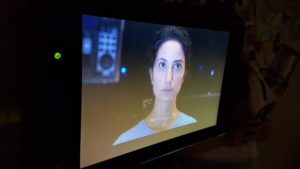 What appeals to you about sci-fi as a genre?
What appeals to you about sci-fi as a genre?
I don’t make exclusively sci-fi films, but I am certainly drawn to it, because sci-fi can explore larger themes and ideas of what it means to be human, especially in the context of the future. You can explore whole new worlds, delve into the fantastic and bizarre, but still ground the idea in human stories and emotions that everyone can relate to.
Which sci-fi writers, directors, and films have influenced you?
Like many people, I grew up watching Star Warsand would watch those films over and over. Over time, I watched classics like 2001: A Space Odysseyand Solaris, and they certainly had an influence on me. One film of note is La Jetee by Chris Marker. The first time I watched it, I was blown away. It is so amazing to have such impactful storytelling with only still images. If anyone hasn’t seen it, they should watch it.
In terms of newer films, I like Eternal Sunshine of a Spotless Mind, Her, and Arrival, to name a few. I’ve also started to read more sci-fi novels recently. I most recently read Stories of Your Life and Others by Ted Chiang and found it so fascinating, I couldn’t put it down.
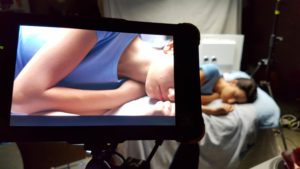 What inspired your short indie sci-fi film The Jump?
What inspired your short indie sci-fi film The Jump?
One thing that inspired me initially was “The Overview Effect,” which is “a cognitive shift in awareness reported by some astronauts and cosmonauts during spaceflight, often while viewing the Earth from orbit or from the lunar surface. From space, national boundaries vanish, the conflicts that divide people become less important, and the need to create a planetary society with the united will to protect this ‘pale blue dot’ becomes both obvious and imperative.”
This concept is so poetic, beautiful and life-changing, I wanted to explore it in some way. I started with a simple idea of an astronaut sending messages back to Earth, where it seems at first the messages are to a person, but it’s revealed they are to all of humanity.
As I worked on the script with two writers, Uriel Emil and Rachael Halliwell, we moved away from this initial idea and added more of a narrative, building in conflict and tension. We ended up, I hope, with a film that carries a lot of drama, but maintains some lyrical notions of space exploration. I want to thank Uriel and Rachael for their invaluable support in this project; without them, The Jump wouldn’t have been imagined.
What was it like to work with NASA’s imagery as part of your creative process?
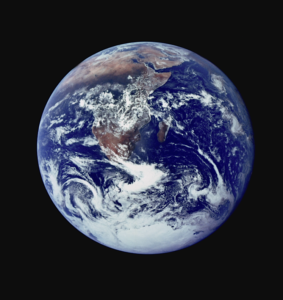 It was both challenging and inspiring. The NASA archives are vast. It took quite a bit of time researching which types of footage would work best for the story and where to find them. Overall, it was an enjoyable process. I enjoy using archive material in my work and have done so before in previous projects such as The Frozen People.
It was both challenging and inspiring. The NASA archives are vast. It took quite a bit of time researching which types of footage would work best for the story and where to find them. Overall, it was an enjoyable process. I enjoy using archive material in my work and have done so before in previous projects such as The Frozen People.
I used a lot of NASA’s computer-generated imagery in my film. Alongside that, I also used some actual photographs of space and the Earth. It is such an honor to be able to use actual NASA images alongside our production footage.
Did the imagery inspire the story? Or did you write the story first, then search for imagery?
Good question! We knew we needed to use some footage, so I did some initial research into what was available. Once we came up with the idea of space travel and wormholes, I checked for footage that would fit before we continued writing. It was a bit of a back-and-forth process, as we needed to make sure that we didn’t write a scene that couldn’t be produced.
How much of The Jump is NASA imagery, and how much is VFX you created?
All space footage is from NASA. I didn’t do any other digital VFX, except one shot of the jump to hyperspace (with a nod to Star Wars) which I created in After Effects using a video clip taken in the International Space Station. I was lucky with how much great NASA footage there is available, so I didn’t have to get any extra VFX done.
For the section where Nina goes through the wormhole, I cut various different CGI NASA imagery with footage of practical, analogue effects I shot in the studio, using macro photography of water, oil and paint, and filming the actress through a bendy plastic magnifying sheet in the studio. This low-fi technique created a unique in-camera effect and hopefully made some images that are visually arresting, especially within our very limited budget.
What challenges did you face in producing the film? How did you solve them?
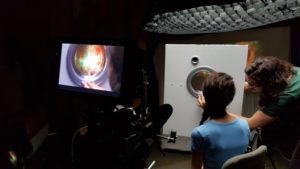 The first challenge was a short deadline. The whole film was conceived, written, produced, edited and delivered in about two months. We managed to overcome this tight deadline by just setting targets and continuing, no matter what. For example, I set the shoot date before we had finished the script or nailed down cast or crew. We just had to continue until I had all the pieces in place. This approach isn’t right for every project, but in this case I just embraced it. I have a motto of “take it as it comes.”
The first challenge was a short deadline. The whole film was conceived, written, produced, edited and delivered in about two months. We managed to overcome this tight deadline by just setting targets and continuing, no matter what. For example, I set the shoot date before we had finished the script or nailed down cast or crew. We just had to continue until I had all the pieces in place. This approach isn’t right for every project, but in this case I just embraced it. I have a motto of “take it as it comes.”
Also, we had a very low budget, but I was fortunate that I know a fantastic director of photography, Jan Vrhovnik, who came on board as he was keen on the idea and wanted to get involved. We filmed the interior of the spaceship in my art studio, which we blacked out. I tasked the production designer, Chris Brake, to make some small sections of a spaceship which would fill the frame behind the actor, enough to give the illusion of a location without creating a whole set. One section I think works well is where we created a kind of back projection, when Nina looks out the window at the stellar nursery. We projected a NASA image onto a screen outside the window and used it to create a reflection in the window. It’s a simple trick, but effective.
One other thing I’d like to mention is pulling off the aging sequence, with the help of makeup artist Kelly Harrington. We worked with the two actors over the course of a day to alter their hair and beards to create the different ages of the character. That was a fun day!
Overall, I think I embraced the limitations set on me and focused on the story being told, rather than getting bogged down in CGI effects, to give the film a stronger resonance with audiences.
What has it been like to showcase The Jump in front of audiences?
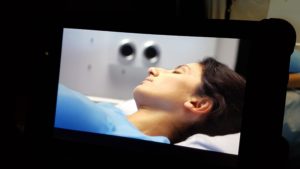 Firstly, I want to give a huge thanks to all the cast and crew for helping me make this film a success! It’s been such a fantastic response from festivals; I’m so pleased. I’m very grateful to have been selected for so many great festivals, and even more grateful to have won an award! Thank you to all the festival organizers.
Firstly, I want to give a huge thanks to all the cast and crew for helping me make this film a success! It’s been such a fantastic response from festivals; I’m so pleased. I’m very grateful to have been selected for so many great festivals, and even more grateful to have won an award! Thank you to all the festival organizers.
It’s always best to sit with an audience to watch your film together, and I’m happy to say audiences have responded really well. Everyone seems to really connect with the story and the character. I’ve had several people tell me it brought them to tears, which they admit is impressive within ten minutes. I have to admit too that even now when I watch it, despite seeing it hundreds of times at this point, I still feel emotional at the end.
What are you working on right now?
I am finishing off a short film for an anthology called The Impact—fifty short films are being cut into this feature film. The short films tie together with this concept: An asteroid collides with the Earth, and as people all over the Earth look into the face of death with certainty, what would they choose to do in their last few hours?
Throughout 2019, I’m developing an audiovisual collaboration between myself and Matthew Grouse, a composer based in Glasgow, called CON-TACT. It’s an audiovisual work exploring skin as material and metaphor, where skin is the boundary for the body and also passage between body and environment. The work has been commissioned by Cryptic, Glasgow, for their Cryptic Nights program, and will be presented at the Centre for Contemporary Arts Glasgow in 2020.

Andy Sowerby
I’m also involved in a feature film Forever in a Day, directed by Lawrence Barraclough. It’s a documentary about the nature of time, loss and storytelling. The bulk of the shoot is complete; I’m working with Lawrence to develop the story structure and will work as editor on the film.
Andy Sowerby is a filmmaker and visual artist. He is a graduate of Newport Film School, UK. His films have featured in screenings, exhibitions and film festivals worldwide, including Aesthetica Film Festival, London Short Film Festival, Atlanta Film Festival and BBC Music Video Festival. Andy has also created live cinema performances at various venues across the UK including at Latitude, White Night and Great Escape Festivals. He can be contacted online at andysowerby.net, on Twitter as iamandysowerby, and on Instagram as iamandysowerby.